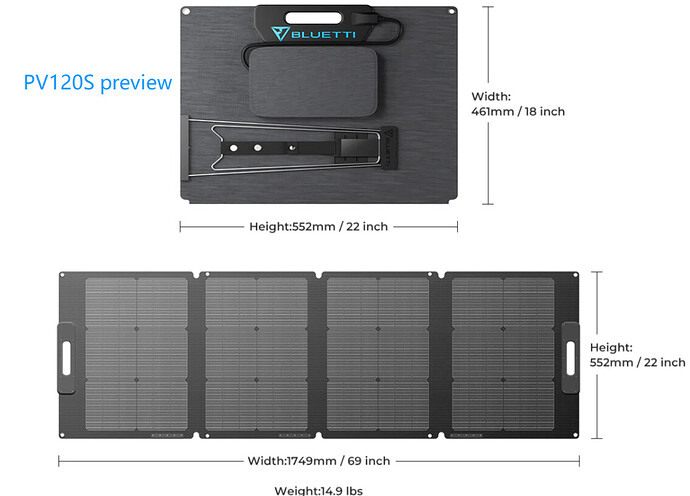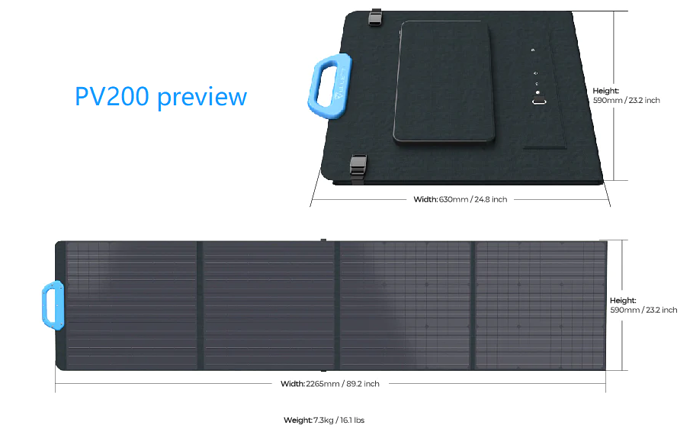Hello,
I purchased two A/C 180’s and two 200 w solar panels, one for myself and one for my twin sister. The power units arrived yesterday and the solar panels are expected tomorrow or Saturday. My sister seems happy with the power unit, but said she thinks the solar panel is too large…
so my question is comparing the 100 w panel to the 200 w panel, are they significantly different in size? and generally, the pro’s and con’s of the two different solar panels for use with the A/C 180.
1 Like
@bluetti_myhandonfiregmailcom
First of all, thank you very much for your support of BLUETTI products!
When you say 100W and 200W solar panels, are you referring to our PV200 and PV120?
PV200(OCV): 26.1V
PV120S(OCV): 24.8V
Here are their size and weights for your reference.
AC180 can accept 500W Max., VOC 12-60V solar input. We recommend connecting two PV200s in series (VOC 52V, up to 400W in ideal sunlight conditions) for faster charging efficiency.
1 Like
Sounds like you are asking about connecting mismatched solar panels. Connecting a 200 Watt panel with a 100 Watt panel:
.
The way it works:
.
- If mismatched panels in series, max current for the panel system is determined by the panel with the lowest current capability !!! Then you add the voltage capability from each panel for a total voltage. Then you multiply the total voltage by the current of the lowest current capability panel, that gives the max power output of your panel system (amps X volts = Watts).
.
- If mismatched panels in parallel, max voltage for panel system is determined by the panel with the lowest voltage capability !!! Then you add the current capability from each panel for a total current. Then you multiply the total current by the voltage of the lowest voltage capability panel, that gives the max power output of your panel system (amps X volts = Watts).
.
Another way to say same thing:
.
— Connecting in series, voltages add together and lower current panel will dominate: Power in Watts = ( V1 + V2 + … ) X Amps of low current panel.
— Connecting in Parallel, currents add together and lower voltage panel will dominate: Power in Watts = ( A1 + A2 +… ) X Volts of low voltage panel.
1 Like
I would avoid mixing panels if you can. If you would prefer a single 100w panel, then it would take twice as long to charge your unit compared to a 200w panel (obviously). But it depends on your needs. If you use your device lightly and don’t require faster charging or only use the panels occasionally due to using grid power for charging or live in the sun belt where there’s always a lot of solar energy available and you can easily charge your device with a smaller panel then you should consider it. If your worried about size and weight then its a toss up IMO. 2-100w panels are eaiser to handle but you have more connections to make and possibly more things to go wrong. But if one panel went bad for some reason you would still have another. conversely a single 200w panel is easier to hook up despite being larger and heavier, but if it you dropped it and broke it you would be stuck with no charging ability.
The 200 watt panel is twice the size of the 100 watt. It all depends on what is most important…easy set up and dealing with only one panel set up and one set of wires or lighter panels, setting up twice the steps and two sets of wires.

